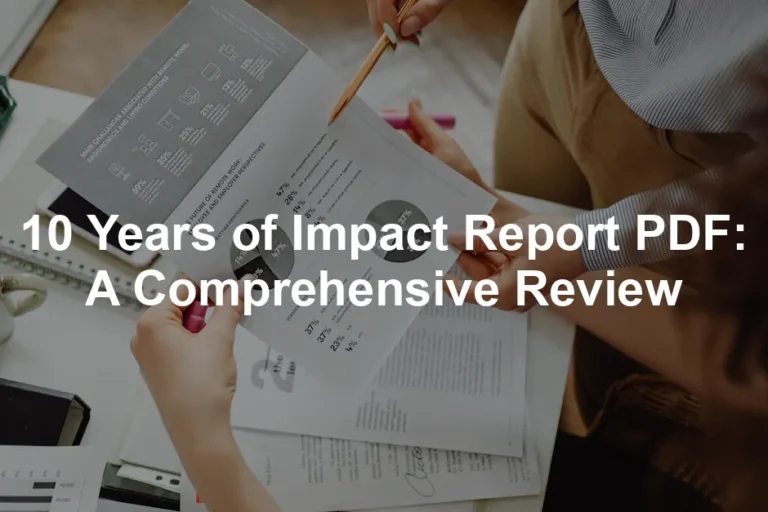Introduction
Pension statistics play a crucial role in retirement planning. These numbers help professionals make informed decisions, ensuring clients can enjoy their golden years without a financial cloud looming overhead. With the 2024 pension statistics rolling in, it’s essential for retirement planning professionals to stay updated on these trends.
As we step into 2024, pension statistics reveal a landscape shaped by economic fluctuations and evolving market conditions. Retirement planning professionals must navigate these waters with precision. The statistics of 2024 provide a fresh perspective on funding ratios, participation rates, and the overall health of pension plans across the nation.
In this article, you can expect a thorough exploration of the latest pension statistics, including trends that could impact your clients’ retirement strategies. We’ll dive into various types of pension statistics, their significance, and how understanding these figures can empower professionals to craft effective retirement plans. Buckle up; we’re about to embark on an enlightening journey through the world of pensions!

Understanding Pension Statistics
What Are Pension Statistics?
Pension statistics are numerical data that reflect the state of pension plans, offering insights into their stability and effectiveness. These statistics are significant for retirement planning professionals, as they provide a snapshot of how well pension funds are performing and the level of participation among workers.
Types of pension statistics vary widely but often include:
- Funding Ratios: This statistic indicates the ratio of a pension fund’s assets to its liabilities. A funding ratio above 100% means the fund has more assets than liabilities, which is a positive sign. Conversely, a ratio below 100% signals potential shortfalls in meeting future obligations.
- Participation Rates: This percentage shows how many eligible workers are participating in retirement plans. Higher participation rates typically correlate with better retirement preparedness.
- Pension Deficits: This figure highlights the shortfall when pension liabilities exceed assets. Understanding deficits can help professionals gauge the overall health of pension plans.
- Average Returns on Investments: This statistic reveals how well pension funds are investing their assets. Consistently high returns are essential for maintaining healthy funding ratios.
- Employer Contributions: This data reflects the amount employers are contributing to retirement plans. Increased contributions can improve the funded status of a pension plan.
Understanding these statistics is vital for retirement planning professionals. They not only reflect the current state of pension funds but also forecast potential challenges clients may face in securing their financial futures. By keeping a close eye on these figures, professionals can craft strategies that protect and grow clients’ retirement savings.
If you’re looking for a comprehensive guide to help you navigate these complex waters, consider picking up Retirement Planning for Dummies. It’s a fantastic resource that breaks down the intricacies of retirement planning into digestible pieces, making it easier for even the most confused individuals to grasp the essentials!

Why Pension Statistics Matter for Retirement Planning Professionals
Pension statistics are the bread and butter for retirement planning professionals. They serve as a compass, guiding advisors in making informed decisions for their clients. When clients approach retirement, they want to know if they can afford that dream vacation or if they’ll be living off ramen noodles. Accurate pension data helps professionals paint a clearer picture of their clients’ financial future.
These statistics do more than just inform decision-making; they shape the entire retirement strategy. For instance, if the funding ratio of a pension plan is slipping, it might be time to rethink investment strategies or increase contributions. Understanding trends in pension funding enables advisors to tailor their recommendations, ensuring clients are prepared for whatever life throws their way.
Moreover, accurate data prevents unpleasant surprises. No one likes a financial wake-up call. By analyzing current statistics, retirement planning professionals can proactively address potential issues. This way, clients can retire with confidence, knowing their financial plans are grounded in reality.
Speaking of confidence, if you’re looking for a solid foundation to build your financial literacy, you might want to check out The Total Money Makeover. This book offers practical steps to take control of your finances and build a solid foundation for your future.
Current State of Pension Statistics in 2024
Overview of Pension Funding Studies
The 2024 Corporate Pension Funding Study from Milliman paints a revealing picture. The funded percentage for major corporate pension plans has decreased from 99.4% to 98.5%, indicating a slight dip in financial health. This drop translates to a pension deficit that has ballooned from $8.5 billion to a staggering $19.9 billion. Despite these concerning figures, the average return on investments is sitting comfortably at 7.2%.
Turning our gaze to public pensions, the Equable Institute offers additional insights. The national average funded ratio for U.S. state and local pension funds is projected to rise from 75.8% to 80.6% in 2024. This uptick is due to robust market performance, yet challenges remain, including persistent unfunded liabilities that continue to loom large.

Key Findings from Recent Studies
Milliman Corporate Pension Funding Study
In the latest findings, the Milliman study highlights several essential statistics. The funded percentage has notably decreased from 99.4% to 98.5%. This decline is accompanied by an increase in the pension deficit, which has risen to $19.9 billion. The average expected return has seen a positive shift, increasing from 5.8% to 6.4%, suggesting that while returns are improving, they still face challenges in covering growing liabilities.
Additionally, the average discount rate fell slightly from 5.18% to 5.01%, indicating a cautious environment. These numbers suggest that while some aspects of pension funding are looking up, the overall landscape remains precarious. Retirement planning professionals must carefully consider these figures when advising clients on their retirement strategies.
As we digest these statistics, it’s crucial to keep an eye on how they evolve. The volatility in funding ratios and deficits can significantly impact the advice professionals provide. The latest data underlines the importance of adapting strategies to ensure clients can still enjoy their retirement dreams without financial hiccups.

Public Pension Quarterly Insights
Goldman Sachs recently released its quarterly insights, shedding light on the state of public pensions. The findings indicate a funded status of approximately 83% for public pension plans, reflecting a slight dip in performance. While the investment returns hovered around 1.2% in the last quarter, the overall picture points to a need for strategic adjustments in retirement planning.
Investment returns play a pivotal role in funding pension plans. Whenever the markets take a tumble, pension plans feel the pinch. This underscores the importance of diversifying investment strategies. Retirement planning professionals must stay vigilant, adjusting their approaches based on market conditions. With the growing emphasis on sustainable investments, aligning portfolios with environmental, social, and governance (ESG) criteria could benefit long-term returns.

If you’re interested in learning more about effective investment strategies, consider reading The Intelligent Investor by Benjamin Graham. This timeless classic offers invaluable insights into the world of investing, making it a must-read for anyone looking to enhance their financial acumen.
Impact of Economic Factors on Pension Statistics
Economic factors are the puppeteers of pension funding status. Interest rates, inflation, and market volatility are key players in this drama. As interest rates inch upwards, the cost of borrowing increases, impacting pension liabilities. Inflation, on the other hand, erodes the purchasing power of fixed income streams, posing challenges for retirees relying on pensions.
Projections for future funded statuses suggest a mixed bag. If inflation continues at its current pace, pension plans may struggle to maintain healthy funded ratios. Conversely, a drop in interest rates could provide relief, allowing funds to stabilize. Retirement planning professionals should closely monitor these indicators, as they will directly affect the strategies they employ for their clients.

As we look ahead, the interplay between these economic factors will be crucial. Anticipating shifts in interest rates or inflation can help professionals prepare their clients for potential funding shortfalls. Planning for contingencies becomes essential in a landscape where uncertainty reigns supreme. By staying informed and agile, retirement planners can navigate these economic complexities effectively, ensuring their clients remain on track for a secure retirement.
Generational Perspectives on Retirement Planning
Attitudes Toward Retirement Planning Across Generations
Retirement planning attitudes vary greatly among different generations. Recent surveys, notably Standard Life’s Retirement Voice, reveal some eye-opening trends. It seems that many people aren’t too keen on planning for the golden years. In fact, only 29% of participants reported doing extensive retirement planning. Ouch!
Baby Boomers, those born from 1946 to 1964, often think about retirement only when they’re closer to the finish line. They typically start planning around age 49. Contrast that with Generation Z, who show a proactive attitude, beginning to consider their retirement at just 20. It makes you wonder if the youth are onto something or if they’re just overly optimistic!
Generation X, those born between 1965 and 1980, are in a bit of a pickle. Over half of them regret not starting their planning sooner. This age group anticipates a six-year gap between their desired retirement age of 62 and the reality of retiring at 68. Talk about a rude awakening!

Millennials, on the other hand, are caught in a web of student loans and high living costs, making it hard for them to save. Surprisingly, they do seem more engaged than Generation X, possibly due to the financial literacy resources available online. It’s a mixed bag, but at least they’re trying!
The Importance of Early Planning
Statistics reveal a clear message: starting retirement planning early pays off. Research indicates that those who plan ahead are nearly three times more likely to feel good about their financial situation. Seriously, who wouldn’t want that?
For example, planning significantly reduces financial stress later in life. When individuals start their planning around age 36, they set themselves up for success. Those who engage in extensive planning enjoy a more stable financial future. It’s almost like having a secret weapon against financial woes!
Moreover, early planning allows for better investment growth. The earlier you start, the more time your money has to grow. Compounding interest is the magical fairy dust that can turn a small contribution into a comfortable nest egg. So, whether it’s a 401(k), IRA, or even a simple savings account, the earlier you begin, the more you’ll benefit.

If you’re looking for a roadmap to financial independence, check out The Simple Path to Wealth. This book provides actionable advice that can help you set the stage for a financially secure future.
In conclusion, the generational differences in attitudes toward retirement planning highlight the need for tailored approaches. Financial professionals should keep these differences in mind when advising clients. By encouraging early planning, advisors can help clients achieve a stress-free and fulfilling retirement. So, let’s raise a toast to proactive planning and a future filled with financial security!

Future Trends in Pension Statistics and Retirement Planning
Anticipated Changes in Pension Structures
The world of pensions is on the brink of transformation. Based on recent trends and statistics, we can expect significant reforms in pension systems. With the funded ratio for major corporate pension plans dipping from 99.4% to 98.5%, the urgency for change is palpable. This decline has led to a staggering pension deficit of $19.9 billion, forcing stakeholders to rethink their strategies.
So, what changes might we see? For starters, a shift toward hybrid pension plans could become more common. These plans blend defined benefit and defined contribution elements, offering the best of both worlds. As companies seek to balance risk and reward, hybrid plans could appeal to a broader range of employees.

Moreover, the impact of employer contributions is undeniable. Recent data shows a downward trend in contributions, which dropped from $19.7 billion to $16.5 billion in 2023. This decline raises questions about the long-term sustainability of pensions. To counteract this, we may witness increased pressure on employers to enhance their contributions, especially in light of rising inflation and market volatility.
But wait, there’s more! We can’t ignore the looming shadow of regulatory change. As governments react to economic pressures, new legislation could emerge, influencing how pensions are managed. Retirement planning professionals must stay alert to these developments. The evolving landscape requires a proactive approach, ensuring strategies align with potential new regulations.

If you’re looking for a guide on how to make your money last, consider How to Make Your Money Last. This indispensable guide provides strategies for managing your finances effectively in retirement.
In light of these anticipated changes, how should retirement planning strategies adapt? First, professionals should emphasize diversification. By encouraging clients to spread their investments across various asset classes, they can mitigate risks associated with funding shortfalls. Additionally, education around hybrid plans will be crucial for clients to understand their options fully.

Lastly, as the market evolves, so too should the tools used for retirement planning. Financial professionals may benefit from integrating technology into their practices. Utilizing advanced software can help analyze pension data dynamically, providing clients with tailored advice based on real-time statistics. Adapting strategies to these upcoming shifts will give professionals an edge in navigating the uncertainties of the pension landscape.
The Importance of Ongoing Education for Retirement Planning Professionals
In a rapidly changing environment, ongoing education is paramount for retirement planning professionals. With the pension landscape evolving, staying informed on the latest statistics and trends is vital. Continuous learning enables professionals to provide clients with the most accurate and relevant advice.
So, where can professionals find useful resources? Various organizations, such as the Equable Institute and Milliman, regularly publish reports and studies. These resources offer valuable insights into pension trends, funding ratios, and employer contributions. By subscribing to newsletters or engaging in webinars, professionals can stay updated on emerging data.

Additionally, industry conferences can serve as excellent platforms for education. Networking with peers allows professionals to exchange knowledge and share best practices. Furthermore, participating in workshops can enhance skills and understanding of complex pension regulations.
Engaging with online courses is another fantastic option. Many institutions offer specialized programs focused on retirement planning and pension management. These courses not only provide up-to-date information but also equip professionals with the skills needed to navigate the intricacies of pensions.
If you’re looking for a reliable guide to financial management, I recommend The Bogleheads’ Guide to Investing. This book provides a straightforward approach to investing and personal finance, making it a perfect companion for both beginners and seasoned investors.
Ultimately, ongoing education empowers retirement planning professionals to adapt their strategies effectively. By leveraging the latest statistics and trends, they can better serve their clients. In a world where change is the only constant, being informed is not just beneficial—it’s essential.

Conclusion
In summary, the pension landscape is evolving, and understanding these changes is crucial for retirement planning professionals. We’ve explored anticipated reforms in pension structures, emphasizing the potential shift towards hybrid plans and the need for increased employer contributions. Additionally, we highlighted the importance of ongoing education to keep pace with the fast-changing environment.
Professionals must leverage the latest pension statistics to refine their strategies. By doing so, they can provide clients with tailored advice and ensure their financial futures remain secure. As we look ahead, adapting to the evolving landscape will be key in helping clients navigate their retirement planning journey successfully.
Embracing these changes and staying informed can empower retirement planning professionals to enhance their services. Let’s harness the power of data and education to create a brighter, more financially secure future for our clients.
For a comprehensive analysis of pension statistics by country, check out this resource: pension statistics by country.
If you’re still looking for more financial tips, you might want to explore The Psychology of Money. It offers timeless lessons on wealth, greed, and happiness that can reshape your financial mindset.
Please let us know what you think about our content by leaving a comment down below!
Thank you for reading till here 🙂
All images from Pexels




